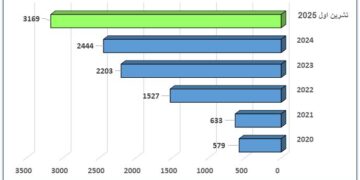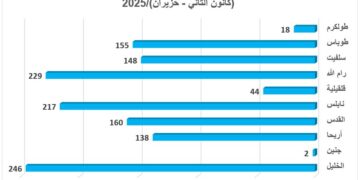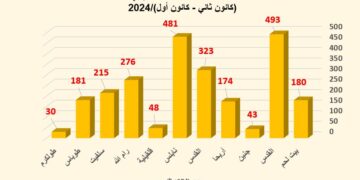Beyond the “Violence Circle”
In much of the global discourse, the Israeli settlers on the Palestinians frame the Israeli–Palestinian conflict as a “circle of violence”, a continuous sequence of attacks and their way of life; they are the predictable outcomes of a legal and political structure designed to maintain domination.
Impunity as the footing of Structural Violence
An Amnesty 2021 report described Israel’s “persistent failure to ensure accountability” for grave breaches of international law; the unlawful killings and forced transfers to indiscriminate attacks on civilians. The impunity the Israeli settlers enjoy is not a mere by-product of conflict, but the very mechanism through which structural violence reproduces itself.
In 2022, OHCHR explicitly noted “a lack of accountability lies at the heart of ongoing violations in the occupied Palestinian territory.” They go on to explain that as long as the acts committed by both state and settler go on without repercussion, then it is deemed to be identified as sanctioned acts orchestrated toward a specific end. In the occupied West Bank and East Jerusalem, for example, roughly 88% of Israeli military investigations into alleged abuses were either closed without charges or left unresolved, according to 2025 media reporting. This failure of justice reinforces a coercive environment where dispossession and abuse persist unchecked.
The Settler Movement: From Margins to the Helm
The deep roots of this impunity can be traced through the rise of the Israeli settler movement, which has transformed from a marginal religious current in the 1970s into one of the most influential political forces in Israel today.
Following Israel’s occupation of the West Bank in 1967, settlements began as illegal outposts, later normalized and legalized, particularly after the right wing Likud Party came to power in 1977. What began as an ideological project rooted in religious Zionism “reclaiming” biblical lands has evolved into a vast settler-industrial complex. Today, settlers constitute more than 8% of Israel’s population, up from less than 2% in 1989, inhabiting over 200 settlements and 300 outposts.
These settlements and all it entails divide Palestinian territory, eroding any prospect of a viable, contiguous Palestinian state. The settler movement has successfully merged religious, nationalist, and security narratives, presenting itself as both the guard of Zionist pioneering and the protector of national security and State identity. Nearly half of Jewish Israelis now believe that settlements strengthen Israel’s security posture; a concept deeply and widely adopted in the state’s political and military establishment.
State Domination and Institutional Expansion
The settlers’ rise in Israel was not merely demographic but institutional. By infiltrating key state structures; including the military, parliament, and ministries; the Israeli settler leaders have reshaped Israeli policy from within. Their plan of engagement-versified with public religious figures such as Uri Ariel, a former head of the Yesha Council, to current ministers Bezalel Smotrich and Itamar Ben-Gvir; which exemplify the formalization of settler ideology within state system of government.
Smotrich, as Minister of Finance, has redirected state budgets to expand settlements, legalize outposts, and fund settler infrastructure, while Ben-Gvir, as Minister of National Security, has reframed police priorities to shield settler activity and suppress Palestinian protestation. The rise of the Israeli settlers’ power and influence within the government provided them with state power; thus institutionalizing the settler activism; which in turn normalizes acts like land seizure, population transfer, and dual legal regimes, violence and much more.
The Normalization of Violence
The Wall and Settlement Resistance Commission reported that between October 7, 2023, and October 2025, it documented 38,359 attacks by the Israeli occupation army and settlers against Palestinian civilians and their property. Of these, the occupation army was responsible for over 31,205 attacks, while settlers committed more than 7,154. Since then, more than 2,000 additional attacks have been recorded, which reflects the collapse of the boundary between state and settler violence.
This new phase is marked by the dominance of Hardalim, an unquestionable fusion of ultra-Orthodox and nationalist ideologues many of whom draw inspiration and advocate for “Jewish supremacy” notion and the expulsion of Palestinians. Once fringe and outcast by the overwhelming Israeli majority, this ideology now enjoys direct representation; in fact dominant command in Israel governing coalition. The result is a political order that legitimizes coercion, rewards illegal expansion, and deepens the structural conditions that validate violence.
Breaking the Circle
Understanding the various developing elements of the Israeli-Palestinian conflict; the gradual evolution (if you will) toward the circle of impunity rather than a circle of violence has also reframed the challenges and the roles dictating the ground rules as the shift from random contained confrontations to the enduring systems of power that generate them. Ending this circle demands more than ceasefires or diplomatic mediation, it requires dismantling the legal and political structures that produce impunity.
Breaking the circle requires:
- Independent accountability: Investigate abuses without bias.
- Halt illegal settlements: Stop all state support immediately.
- Reform laws and institutions: End dual legal systems; restore equality under the law.
- Tackle structural injustice: Address dispossession, land seizure, and apartheid governance.
Without these structural changes, the circle of impunity will continue unchecked, ensuring the repetition of harm and the suffering of Palestinian civilians.
As the UN High Commissioner for Human Rights warned in late 2024, “the entrenched impunity cannot persist.” In the absence of accountability mechanisms, violence is not merely an anomaly shaped by current conditions; it becomes an instrument and an entrenched strategy of governance.
The systemic undermining of Palestinians by state governing bodies and by settlers alike; ensures the continuation of what is often referred to as a “circle” of violence. Yet this is not a failure of peace but rather the predictable outcome of a system purposefully constructed to prevent it.
Prepared by:
The Applied Research Institute – Jerusalem














